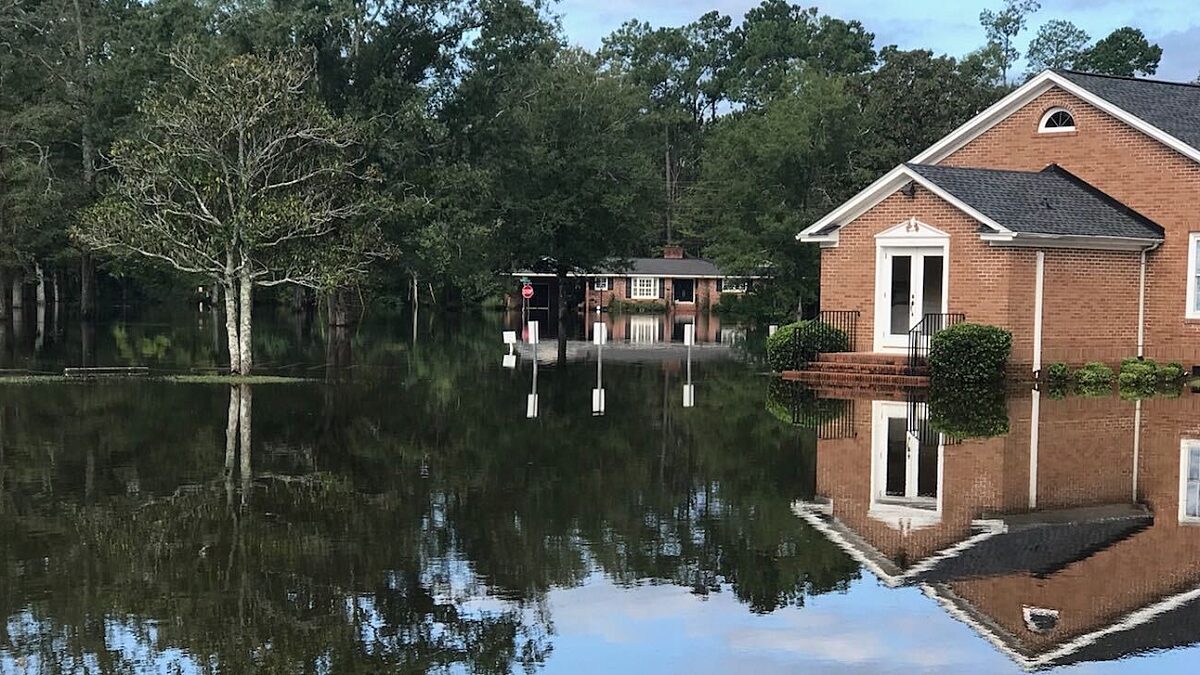
Ready to respond: UMCSC staged to help after Florence floods
By Jessica Brodie
The worst is yet to come. Days after Hurricane Florence battered the coastal Carolinas, devastating communities and claiming 32 lives as of the Advocate’s press time, that’s the consensus among disaster response leaders as they prepare for when, not if.
While the downgraded storm didn’t do as much tree and wind damage in this state as many had feared, the deluge of water caused flash- and much localized flooding throughout the Pee Dee area.
“It’s only going to get worse, because water is now flowing down from North Carolina, overflowing dams and causing major rivers to flood,” said Matt Brodie, disaster response coordinator for the South Carolina Conference of The United Methodist Church. “We are expecting significant flooding to the Marion District and parts of the Florence District and Hartsville District.”
As of press time Sept. 18, disaster response leaders were prayerfully on pause—watching, waiting, staged and ready to respond. Six have died in South Carolina because of the storm: two from carbon monoxide poisoning and several drivers from flood waters or trees.
Twofold challenge
The challenge in South Carolina right now, Brodie said, is that people are in need of help after initial floods and other storm damage, but a lot of roads have been washed out and are impassable.
“It’s a twofold problem. Because the roads are already washed out, it’s hard to get people in and out, and it’s only going to get exponentially worse once the rivers do crest,” Brodie said
As of this writing, all rivers had not yet crested and many dams were holding tight, but the expectation is that within days, things will be far different.
UMC and other disaster response crews cannot go in to help until after the flood waters recede—and even then, no one yet knows how long it will take until roads are clear and accessible enough to move volunteers and supplies into the area.
“After the floods of 2015 and Hurricane Matthew, it took us weeks to get into some places because of the roads,” Brodie said, noting it took a month to get into Nichols after flooding there.
Mobilized and eager to help
But disaster leaders are ready for when they can jump in to help. Billy Robinson, state coordinator for the South Carolina United Methodist Volunteers in Mission Early Response Team, said volunteers are mobilized and eager to help when it is safe.
“We are ready to go and share and spread the love of Jesus to all those in dire need and let them see the hands and feet of Christ,” Robinson said.
A training session was planned at the UMC’s Marion District Office to help ERTs and others learn how to do storm damage assessments locally until full crews can arrive.
In advance of the storm, UMC disaster response workers had moved in some materials and resources, including a trailer of flood buckets and health kits at the Marion District Office, and were attempting as of press time to bring in a muck-out trailer. They are also working hard to identify churches around the district that can house teams as soon as it is safe to do so.
Marion District Superintendent the Rev. Tim Rogers said the event is far from over, even though the rain has stopped. “We are still trying to assess what’s happening around the district, and there is no way for us to know yet how bad it’s going to be in places like Conway, so we’re just doing as much communicating as we can with pastors right now and trying to be as helpful as we can be to conference response crews,” Rogers said.
What people can do now
South Carolina Resident Bishop L. Jonathan Holston said while people might be uncertain, we should have hope.
“There is tremendous evidence of God’s faithfulness in our midst,” Holston said, urging South Carolina United Methodists to pray for the families impacted by this disaster; pray that communities will come together in the recovery process; give generously of compassion and financial resources; and consider being trained and volunteering for recovery efforts.
The conference is asking all congregations in the UMC to be praying for those affected, both in South Carolina and in North Carolina. “As bad as we have it in South Carolina, North Carolina has it worse,” Brodie said.
Congregations are also invited to give financially to the UMC disaster effort.
“Right now, money can do much good,” Brodie said. “It’s good to have financial resources in place to purchase the supplies we need rather than donation of materials.”
The conference is not calling for churches to assemble more health kits and flood buckets, as the Carolinas currently have more than enough courtesy of the United Methodist Committee on Relief.
If people want to give specifically to South Carolina response efforts, they should donate to UMCSC Disaster Response (mail a check payable to South Carolina Conference of the UMC, 4908 Colonial Drive, Columbia, SC 29203, or donate online at www.umcsc.org/data/disasterresponsedonation.php).
To donate to anyone affected in the storm, donate to UMCOR U.S. Disaster Response at www.umcor.org.
Also, United Methodists are urged to get trained to be part of the ERT effort; all skill levels are welcome. Two Early Response Team trainings are coming up (Sept. 22 in Charleston and Oct. 6 in Lexington), and more are being scheduled. Register at www.umcsc.org/data/ertregistration.php.
Also, if you need help, call the UMCSC’s centralized Crisis Assistance Hotline: 800-451-1954.